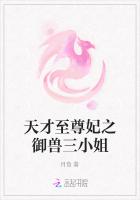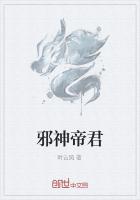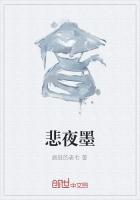In recent times, this rite was exaggerated and distorted into a mere ghastly display of physical strength and endurance under torture, almost on a level with the Caucasian institution of the bull-fight, or the yet more modern prize-ring. Moreover, instead of an atonement or thank-offering, it became the accompaniment of a prayer for success in war, or in a raid upon the horses of the enemy. The number of dancers was increased, and they were made to hang suspended from the pole by their own flesh, which they must break loose before being released. I well remember the comments in our own home upon the passing of this simple but impressive ceremony, and its loss of all meaning and propriety under the demoralizing additions which were some of the fruits of early contact with the white man.
Perhaps the most remarkable organization ever known among American Indians, that of the "Grand Medicine Lodge," was apparently an indirect result of the labors of the early Jesuit missionaries. In it Caucasian ideas are easily recognizable, and it seems reasonable to suppose that its founders desired to establish an order that would successfully resist the encroachments of the "Black Robes." However that may be, it is an unquestionable fact that the only religious leaders of any note who have arisen among the native tribes since the advent of the white man, the "Shawnee Prophet" in 1762, and the half-breed prophet of the "Ghost Dance" in 1890, both founded their claims or prophecies upon the Gospel story. Thus in each case an Indian religious revival or craze, though more or less threatening to the invader, was of distinctively alien origin.
The Medicine Lodge originated among the Algonquin tribe, and extended gradually throughout its branches, finally affecting the Sioux of the Mississippi Valley, and forming a strong bulwark against the work of the pioneer missionaries, who secured, indeed, scarcely any converts until after the outbreak of 1862, when subjection, starvation, and imprisonment turned our broken-hearted people to accept Christianity, which seemed to offer them the only gleam of kindness or hope.
The order was a secret one, and in some respects not unlike the Free Masons, being a union or affiliation of a number of lodges, each with its distinctive songs and medicines. Leadership was in order of seniority in degrees, which could only be obtained by merit, and women were admitted to membership upon equal terms, with the possibility of attaining to the highest honors.
No person might become a member unless his moral standing was excellent, all candidates remained on probation for one or two years, and murderers and adulterers were expelled. The commandments promulgated by this order were essentially the same as the Mosaic Ten, so that it exerted a distinct moral influence, in addition to its ostensible object, which was instruction in the secrets of legitimate medicine.
In this society the uses of all curative roots and herbs known to us were taught exhaustively and practiced mainly by the old, the younger members being in training to fill the places of those who passed away. My grandmother was a well-known and successful practitioner, and both my mother and father were members, but did not practice.
A medicine or "mystery feast" was not a public affair, as members only were eligible, and upon these occasions all the "medicine bags" and totems of the various lodges were displayed and their peculiar "medicine songs" were sung. The food was only partaken of by invited guests, and not by the hosts, or lodge making the feast. The "Grand Medicine Dance" was given on the occasion of initiating those candidates who had finished their probation, a sufficient number of whom were designated to take the places of those who had died since the last meeting. Invitations were sent out in the form of small bundles of tobacco. Two very large teepees were pitched facing one another, a hundred feet apart, half open, and connected by a roofless hall or colonnade of fresh-cut boughs. One of these lodges was for the society giving the dance and the novices, the other was occupied by the "soldiers," whose duty it was to distribute the refreshments, and to keep order among the spectators. They were selected from among the best and bravest warriors of the tribe.
The preparations being complete, and the members of each lodge garbed and painted according to their rituals, they entered the hall separately, in single file, led by their oldest man or "Great Chief." Standing before the "Soldiers' Lodge," facing the setting sun, their chief addressed the "Great Mystery" directly in a few words, after which all extending the right arm horizontally from the shoulder with open palm, sang a short invocation in unison, ending with a deep: "E-ho-ho-ho!" This performance, which was really impressive, was repeated in front of the headquarters lodge, facing the rising sun, after which each lodge took its assigned place, and the songs and dances followed in regular order.
The closing ceremony, which was intensely dramatic in its character, was the initiation of the novices, who had received their final preparation on the night before. They were now led out in front of the headquarters lodge and placed in a kneeling position upon a carpet of rich robes and furs, the men upon the right hand, stripped and painted black, with a round spot of red just over the heart, while the women, dressed in their best, were arranged upon the left. Both sexes wore the hair loose, as if in mourning or expectation of death. An equal number of grand medicine-men, each of whom was especially appointed to one of the novices, faced them at a distance of half the length of the hall, or perhaps fifty feet.
After silent prayer, each medicine-man in turn addressed himself to his charge, exhorting him to observe all the rules of the order under the eye of the Mysterious One, and instructing him in his duty toward his fellow-man and toward the Ruler of Life.


